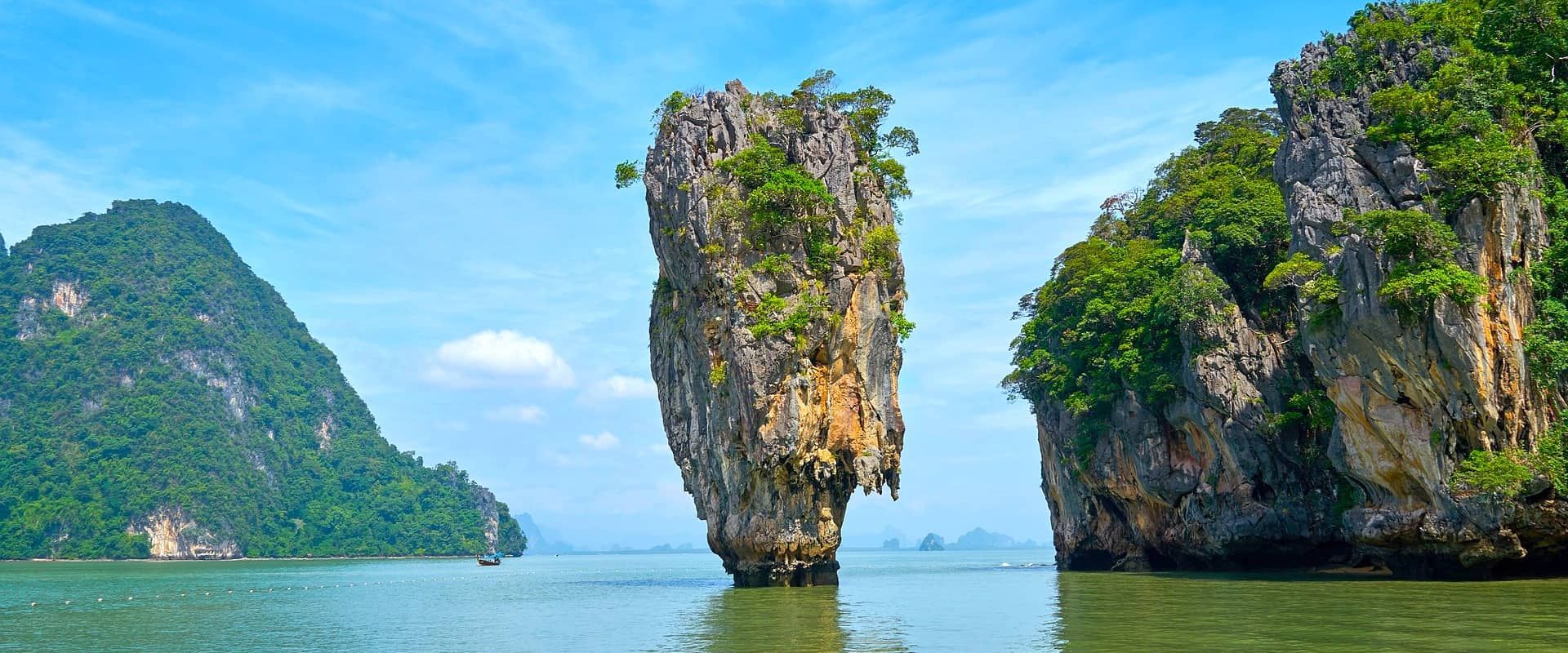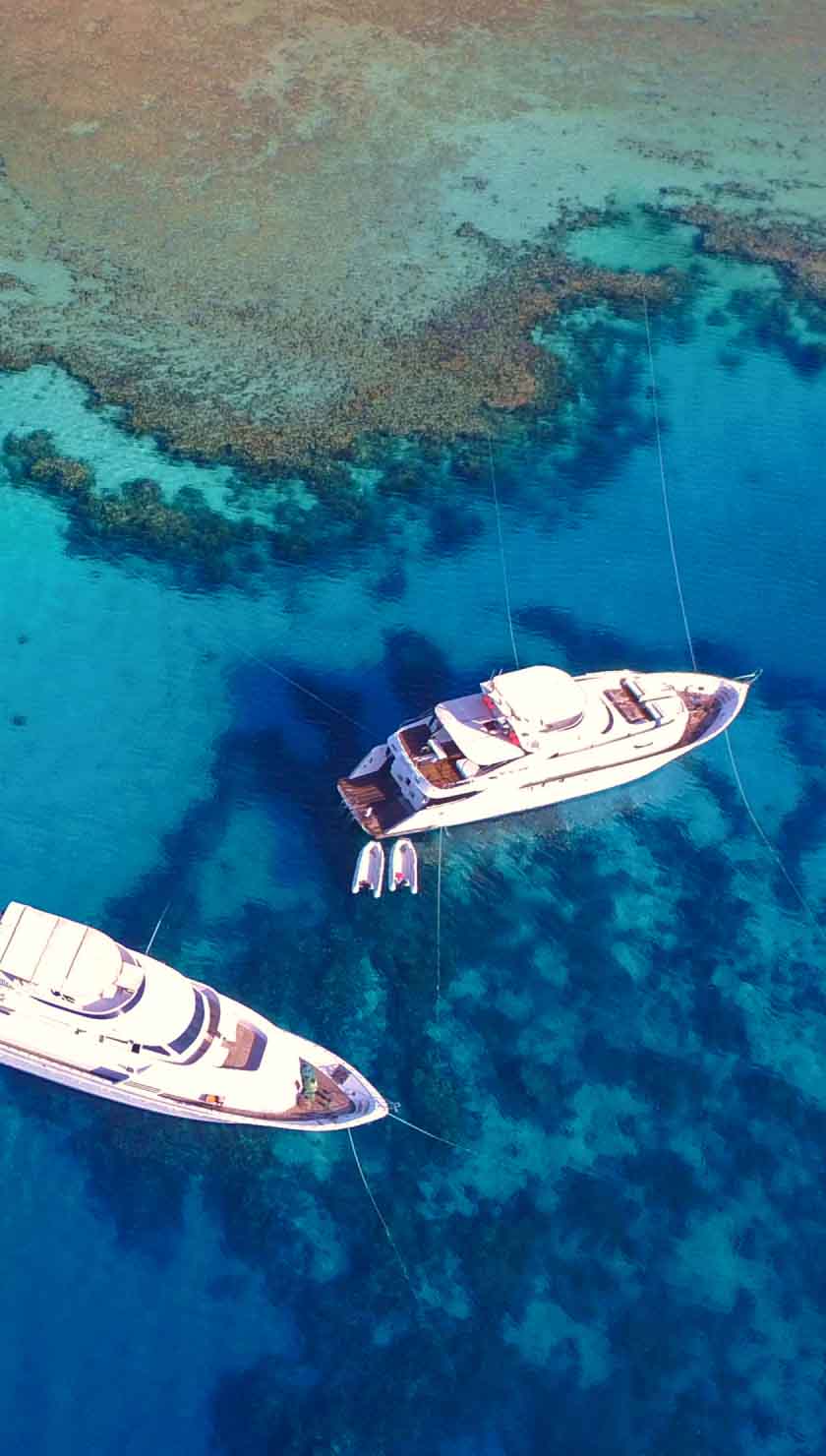What To Expect on a Phuket Liveaboard
On a Phuket liveaboard, scuba divers will enjoy world-class diving, superior service, and luxury accommodations for the ultimate diving holiday. Phuket is Thailand's largest island, located 900 km south of Bangkok in the Andaman Sea, and is the starting point for many liveaboards. Considered one of the top ten diving destinations in the world, Phuket boasts warm crystal clear water, with visibility averaging 30 meters, spectacular reefs and rock formations, and exciting marine life.
Phuket Underwater
Liveaboard.com offers great itineraries on the best Phuket liveaboards. Phuket's dive sites range from 18-30 meters deep and are suitable for all levels of divers. Dramatic drop-offs, small caves, wrecks, impressive boulder formations and coral gardens create stunning underwater landscapes. These generally undisturbed ecosystems are home to the large pelagics down to tiny macro-critters, from the massive manta ray and whale shark to the rare sightings of seahorse and ghost pipefish and harlequin shrimp.
Dive Sites Of Phuket
North Andaman:
Andaman Islands - a diver's paradise, newly opened and relatively untouched, lie approximately 350 kilometers northwest of Phuket in the Indian Ocean. Gigantic barrel sponges, sea fans, dog-toothed tuna, and manta rays up to 50 in number.
Mergui Archipelago & Burma Banks - rarely explored, lie about 180 kilometers northwest of the Similan Islands. These underwater mountains rise more than 350 meters from the ocean floor, reaching just below the surface. Divers can have close encounters with all sorts of marine life, including silvertip, nurse sharks, and huge schools of pelagic fish, together with the unforgettable thrill of gliding over these amazing underwater plateaus.
Richelieu Rock - about 200km northwest of Phuket, there are few places in the world better than this tiny pinnacle for swimming with the whale shark, some of which grow to lengths of 30 meters, can often be spotted here. Its diverse marine life includes barracuda, groupers, mantas, and the harlequin shrimp.
Koh Bon and Koh Tachai - located about 20km north of Similan Island #9 and features one of the only vertical walls in Thailand. The topography is vibrant, with a gentle slope of colorful, bright coral formations and sea fans of different shapes and sizes. Some possible manta ray sightings traveling between these two islands from October to May. Leopard sharks are commonly seen on the sandy flats. Koh Tachai boasts a breathtaking sandy beach on its northeastern shore and is a popular place for mooring boats.
South Andaman:
The South Andaman Sea presents a wealth of offerings just off Phuket.
Koh Phi Phi - Lying in the Mu Koh Phi Phi National Marine Park, east of Phuket, the remarkable landscape of Phi Phi Islands ranks amongst Thailand's top 5 dive destinations. The Phi Phi Islands are most famous for their plunging limestone walls, blanketed with colorful soft corals. In many places, the islands are fringed with shallow coral gardens, where hard and soft corals thrive. Over a dozen exceptional dive sites among the Phi Phi Islands include walls, coral gardens, caves, caverns, and swim-throughs. Glassfish, green turtles, hawksbill turtles, banded sea snakes, squid, angelfish, black-tip reef sharks, and leopard sharks are common visitors to the Phi Phi Islands.
Hin Daeng & Hin Muang & Koh Ha - to the south of Phi Phi lie these two connected islands covered with tropical vegetation and edged by clear blue waters, underwater pinnacles to depths of up to 60m, covered with carpets of anemones, sponges, and sea fans. You will likely see barracuda, moray eels, zebra eels, hunting jacks and trevally, and triggerfish. You will find stronger currents here, which may increase the chance of encounters with whale sharks or manta rays. Hin Daeng is also good for critters such as nudibranchs, cowrie shells, and various species of shrimps.
Koh Ha - is named after 5 small islands between Phi Phi and Hin Daeng, close to Koh Lanta. Known for good cavern diving and swim-throughs, you can see large stalactites hanging over your head. Excellent for photographic lighting.
Koh Racha Noi and Racha Yai - located just south of Phuket, offer exciting drift dives, great visibility, and superb hard coral growth. Racha Noi is the more isolated of the two islands, with stronger currents than its northern partner. Massive underwater boulders provide the opportunity to see manta rays and whale sharks on rare occasions, as well as the more common reef sharks and stingrays. Racha Yai, famous for its deep clear water bays and popular with snorkelers, coral life here is abundant. Easy drift dives amongst stunning coral formations, resident triggerfish, banded sea snakes, and leopard sharks.
Other dive sites include Similan Islands, Surin Islands, Koh Dok Mai, Shark Point, Anemone Reef, King Cruiser Wreck, Ko Bida Nok, Ko Bida Nai or Ko Doc Mai.
Top Tips For Divers
Liveaboard diving in Phuket is seasonal, with most dive operators postponing diving during the Monsoon season between June - September. Water temperatures average 26-29c, and visibility ranges from 25-40m. Air temperature is hot with high humidity, so you should drink much water, especially while diving. The peak season for the Andaman Sea is from October through to April, with February and April being whale shark and manta season. Phuket and Phi Phi Islands are open throughout the year. You may not need more than a 3mm neoprene shorty or full-body wetsuit, but you may get cold after three or more dives per day. Bring your own equipment and a DIN adapter, as Thailand uses the standard yoke system.
Getting To Phuket
Thailand liveaboard cruises depart from Chalong Pier in Phuket. Transfers to the harbor are provided from Phuket International Airport or your hotel. Getting to Phuket is easy with direct international flights, or you can get a 1-hour connecting flight from Bangkok. Air Asia, Bangkok Airways, and Thai Airways are just a few airlines that fly there. You can also reach it overland by train, bus or car. Double-check your departure and arrival port, as some liveaboard itineraries leave Khao Lak, north of Phuket.











